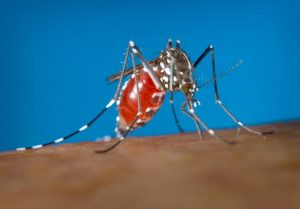By NewsDesk @infectiousdiseasenews
Vietnam dengue update
In an update on the dengue fever situation in Vietnam, an additional 8,970 dengue cases reported from 54 out of 63 provinces including 4 deaths during the week ending July 27. This brings the total cases in the country to 124,751 cases with 15 deaths.
This is an 3.3-fold increase compared to the same period in 2018 of 37,243 cases including 9 deaths.

Dengue fever forecasting
Since 2000, there has been an increase of over 100% in the number of cases of dengue fever in Vietnam, and there is currently no system for forecasting future dengue outbreaks.” according to the Space for Development.
Through their ability to capture important insights about rainfall, temperature, humidity, and soil moisture, among other factors, Earth observation satellites could offer a way to detect early warning signs of the disease.
In an attempt to help reduce the prevalence of dengue fever cases in Viet Nam, HR Wallingford is leading a project to forecast dengue fever outbreaks using Earth observation satellites, as part of the UK Space Agency’s International Partnership Programme (IPP). Called the Dengue MOsquito Simulation from Satellites (D-MOSS), the project involves the integration and analysis of Earth observation datasets, weather forecasts, and a hydrological model to predict the probability of dengue fever outbreaks up to eight months before they occur. The Earth observation data includes historical data, in addition to Sentinel mission data, and the UK Met Office seasonal forecasts, comprised of optical and radar Earth observation data from GPM (NASA/ JAXA), Sentinel and SMOS (ESA), SMAP, Aqua and Terra (NASA) which provide information about rainfall, temperature, humidity, and soil moisture.
The goal is that this information be analysed and processed in such a way that local communities in Viet Nam can use it to design and implement preventative measures, such as eliminating mosquito-breeding sites. Under the D-MOSS system, according to a IPP report, “A new forecast for each district is issued every month and during outbreaks the forecast is issued on a weekly basis.” D-MOSS is a three-year project, which began in February 2018 and will end in February 2021. Once complete, “D-MOSS will be the first fully integrated dengue fever forecasting system incorporating Earth Observation (EO) data and seasonal climate forecasts to issue dengue warnings on a routine basis,” according to Space for Development.
H5N6 avian influenza case reported in Beijing
Thailand chikungunya case tally nears 6,000
Singapore reports 15 local typhoid cases since mid-July: Published memorandum


2 thoughts on “Vietnam dengue update, Dengue forecasting system”